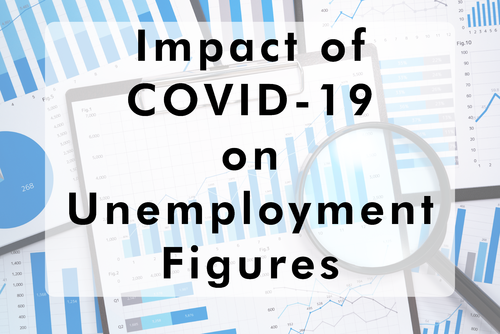On May 21, 2020 the Central Statistics Office (CSO) published the Labour Force Survey for the Quarter 1 2020, which covers the months January to March. Since the public health response to the COVID-19 pandemic, the CSO have produced two sets of data in their employment and unemployment figures: (i) using the International Labour Organisation standard methodology, which allows information to be compared across countries and time; and (ii) estimated figures taking into account the impact of the pandemic on the Irish labour market.
The data shows that if the pandemic had not happened, 2,353,500 people would have been employed in this quarter, and 114,400 people would have been unemployed. When the impact of COVID-19 is factored in, the numbers of people employed drops to 2,070,371, and the numbers of people unemployed increases to 382,311. Looking at the rates: the employment rate moves from 69.8% to 61.1%, and the unemployment rate from 4.7% to 15.5%.
In this Labour Force Survey the CSO have produced further employment estimates, a similar exercise to the unemployment one carried out in three Monthly Unemployment figures. In April 2020 the COVID-19 Adjusted Measure of Employment is estimated as 1,751,393 and the employment rate as 51.4%. In the last recession, the lowest the employment rate went to was 59.6% in Q1 2011. These figures really illustrate the extent of the challenge facing Ireland.
In this Labour Force Survey, other figures have not been adjusted for the impact of the pandemic. So the numbers of people deemed long-term unemployed in Q1 2020 was 31,900 and the rate was 1.3%, bringing this figure back to pre-2008 crisis levels.
On June 3, 2020 the Central Statistics Office (CSO) released the Monthly Unemployment (MU) figures for May. As the CSO have been doing since the March release, they provided the figures with and without the impact of the COVID-19 pandemic.
In May, 139,200 people were classified as unemployed, and their Monthly Unemployment Rate (MUR) was 5.6%. This represents an increase of 14,400 people on the same month last year, and a 0.4% increase in the unemployment rate. There were 41,300 people aged 15-24 unemployed, an increase of 1,500 over the year. Their MUR was 13.5%, a decrease of 0.3% on May 2019. For people aged 25-74, there were 97,900 people unemployed, an increase of 12,900 people. Their MUR was 4.5%, an increase of 0.5% over the year.
However, the picture changes dramatically when the figures are adjusted for the huge impact of COVID-19 on the labour market. Looking at what the CSO call the ‘upper bound’ i.e. that everyone on a COVID-19 PUP would be classified as unemployed, the number of people out of work increases to 645,704, and their unemployment rate is 26.1%.
For people aged 15-24 years, the upper bound of young people out of work stands at 158,495 and their Monthly Unemployment Rate (MUR) moves from a lower bound of 15.7% to an upper bound of 51%. While for the older age group, people aged 25-74 years, the upper bound of people out of work stands at 487,208, and their MUR goes from 4.4% to 22.5%.
On June 5, 2020 the Central Statistics Office (CSO) released the Live Register for May. There were 225,662 people on the Live Register in May 2020, an increase of 35,795 on the same month last year. The CSO notes that there were 543,164 people were on the Pandemic Unemployment Payment (PUP), a decrease of 58,943 on April, 2020. While there were 436,344 people on the Temporary Wage Subsidy Scheme (TWSS), a small decrease on the revised figure of 436,925 for April.
Looking at these figures from an age perspective, young people account for 13% of those on the Live Register, 21% of those on the Pandemic Unemployment Payment, and 13% of those on the Temporary Wage Subsidy Scheme (TWSS). While from a gender perspective, women account for 45% of the Live Register, 45% of the Pandemic Unemployment Payment, and 40% of the TWSS.
In Table A1 in the Live Register release information is provided on the numbers of people “availing of Activation Programmes”. These figures always lag a month behind, and so in April 2020 there were 56,443 participants, an increase of 5,360 on the same month last year. Over the year the numbers of people participating on employment programmes decreased by 10% to 30,397; while, the numbers of people participating on education and training programmes increased by 52% to 26,046 participants. The largest programme continues to be Community Employment, with 21,098 participants. The next biggest programme is SOLAS Full-time Training for Unemployed People, with 16,699 participants: the highest number recorded in the CSO’s data base, which runs from January 2007 to April 2020.
On June 19th the Central Statistics Office published information for the week ending June 7, 2020, and the table below gives you a breakdown across the past nine weeks of the total numbers of people on the Live Register or in receipt of a Pandemic Unemployment Payment or on the Temporary Wage Subsidy Scheme.
